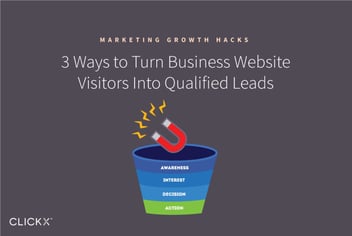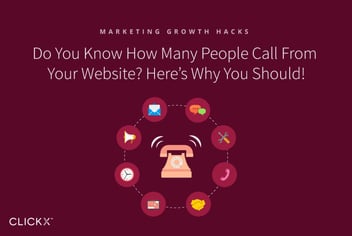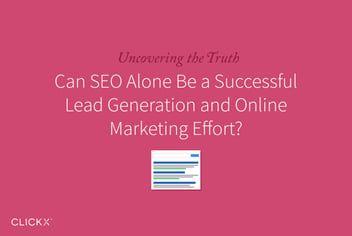7 Reasons Your Lead Generation is Failing
In any business, leads can be as valuable as gold. To generate leads, many companies invest heavily in order to get information about individuals and businesses that could eventually become customers. Lead generation can take the place of online forms to fill out, or they could be recommendations from friends and family. Whatever the form, there is no question that lead generation is vital. What do you do, then, if your lead generation is failing? The first thing might be to identify why your lead generation isn’t working, which can be done by taking a closer look at some of the top seven reasons that lead generation fails.

1. You’re Using the Wrong Strategy
The three most common ways to generate leads are through event marketing, email marketing and content marketing. However, it is important to note that every business, and every industry, will have their own preferred methods of lead generation. If your current lead generation tactics aren’t working, it might be because you’re using the wrong strategy and the wrong medium. If you’re a business catering to other businesses, known as B2B, then you might not be generating leads because you’re not attending the right industry conventions and conferences. Similarly, you might not be gaining consumer leads because you require a phone number or an address in your opt-in form, which might feel too personal for someone just interested in getting the occasional email for more information. If you notice lead generation tapering off or just not improving as expected, changing up your strategy to better suit your business could be the best place to start.
2. You Have an Unappealing Landing Page
The landing page of your business, also known as your home page, is often what can help people determine whether they will be interested in learning more about the company. Your entire brand might be summed up in the first five seconds of loading the page. If the page loads slowly thanks to uncompressed pictures, it might signify to a user that your business isn’t tech-savvy enough. If the content contains misspelled words or grammatical errors, they might assume that your business isn’t paying attention to detail.
In addition, your landing page should convey security, so that users know their contact information won’t be shared with third parties or accidentally leaked due to poor security. The landing page should also be constructed well and easy to navigate. Make it easy for prospective customers to spot the lead-in form and even easier to fill out basic information.

[Tweet “If you’re having a hard time generating leads, here’s why: http://clickxstag23.wpengine.com/reasons-lead-generation-is-failing/ via @clickxio”]
3. Your Content is Lacking
Even with the best marketing campaign imaginable, the content you offer still needs to be impressive, or any lead generation tactics you take up will ultimately fail. In marketing, content is absolutely king, and nothing else can take its place. If you think you are taking all the right steps to generate leads, but something is falling short, take a closer look at the content you’re providing.
Content can take many forms, and for your business it might mean a regularly updated blog, original videos or fantastic photographs. Whatever it is, it should be enough to set you apart from your competitors and demonstrate expertise on whatever it is you’re hoping to sell or provide to paying customers. Although most businesses understand how important content is in the fight for lead generation and future conversions, it is still the area where many businesses fail. According to a 2016 report from the Content Marketing Institute, only 30 percent of B2B marketers feel that their organizations are effective in content marketing, revealing a major weak spot.
4. You are Forgetting the Call to Action
The CTA, or call to action, is an integral part of lead generation. Whether in an email or at the end of the blog post, the call to action should organically draw readers to contact you through their preferred means of communication. A direct call to action might provide readers with the website of the company, or it might offer up a phone number and a point person to contact over the phone. A less direct and more subtle call to action, on the other hand, could include a hyperlinked phrase or keyword that brings users to another relevant page where they can provide contact information, read more about a product or even make a purchase.
Shockingly, as many as 70 percent of small business websites lack a call to action. Not only is this unfortunate in terms of sales and website bounce rates, but it can be problematic for anyone trying to generate more leads. A call to action is a natural way to connect with people who are already reading your content, making them valuable leads that can eventually become conversions and sales.
5. Your Opt-In Forms Aren’t Optimized for Mobile Use
Today, more than 64 percent of adults in America own a smartphone that can access the Internet, and that number is growing daily. As people become increasingly comfortable on their phones, there becomes less and less need to view websites on laptops and desktop computers.
In order to accommodate users that might prefer mobile use, it is important to offer a mobile version of your website. While the expense might not always be feasible for newer small businesses, it is a necessary cost for larger businesses with a big online presence. By offering a mobile version, you can make it much easier for individuals to fill out any opt-in forms to provide you with relevant leads, even when they are on smartphones.
6. Your Incentives Aren’t Appealing
.webp?width=1280&height=850&name=macbook-606763_1280%20(1).webp)
One way that companies generate leads is by offering a drawing, prize or reward of some kind to those who fill in a lead form online or in person. At an industry convention, you might offer gift cards for anyone who fills in a lead form. At a smaller social event targeting individuals rather than businesses, the incentive might be entry into a raffle drawing for prizes. Whatever the case might be, take care to select prizes or rewards that appeal to your target audience. Too small or unimpressive, and people will skip the form altogether.
7. Your Follow Through Isn’t Effective
Generating the leads is only half of the battle. In order to find success, you need to figure out how to turn the leads you generate into customers, clients, sales and orders. Therefore, make sure you have an effective means of dealing with any leads you generate. Once again, the strategy you employ should be targeted to your preferred demographic. If you’re targeting businesses, then a phone call during office hours is likely going to be the best way to get in touch with the lead. If you’re targeting millennials, then an email right after the workday is probably going to help you secure better results.
One way to see if your follow through is effective is to check your conversion rate. A 2.5 percent conversion rate is considered average, but a 5.3 percent conversion rate puts your business in the top group of performers. Of course, the sky is the limit, and working to achieve higher conversions is even better. If you’re stalling under two percent, however, then you need to work less on generating leads and more on handling them effectively in order to lead to conversions.
Lead generation is a vital component of inbound marketing, and few business models can function properly without it. If any one of these seven common mistakes is present in your marketing plan, be sure to address them in order to enjoy better lead generation and conversion.






